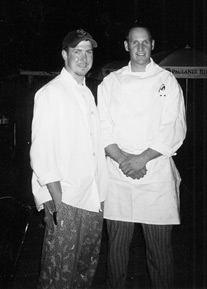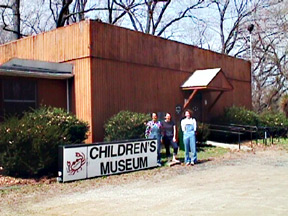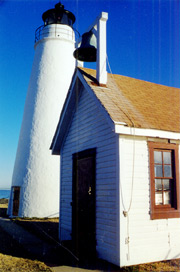|
|
 |
|
photo courtesy of The Nature Conservancy, Robert Noonan
|
Fraaahnk. Braak. Braak.
The Love Birds Are Back
In public, the familiar great blue heron is a solitary, quiet bird. At four feet tall, it is the same height as my first-grade neighbor. Yet it weighs just over five pounds, as little as an underweight newborn human. Along the Bay’s edge, the blue-gray heron flies slowly with neck curled back, wings spread wide and long legs dangling behind. Or it’s spied stalking slowly and deliberately through a salt marsh or tidal shallow ready with its yellow dagger-bill to pounce on fish, crustaceans, amphibians, snakes, other birds or even small mammals. For seven months, it goes its own way.
But in February, the heron’s world becomes a non-stop party of thousands with the annual great blue heron love tryst. At Nanjemoy Creek Preserve near the shores of the Potomac River in Charles County, around Valentine’s Day, as many as 2,000 herons congregate into large squawking flocks at their private resort — er, rookery — to mate and raise their young. Wild sounds fill the air. Fraaahnk. Braak. Braak.
Picture 150 very tall trees each holding four, five or six nests up to four feet across. Picture 2,000 long-legged adult birds with six-foot wingspans swooping to and fro with food for 1,500 chirring long-legged babies. Most of the chicks sit in the nests with mouths open. Some flutter onto the nearest tree branches. Foxes snatch up those that fall. A prowling bald eagle sends the entire community into a screeching panic.
By mid-July, the adults have had enough. They take off for more solitary pursuits, while the chicks figure out that they have to fly if they want to eat.
“When the birds are in residence, it’s overpowering,” says Jonathan Schwedler of The Nature Conservancy, which protects the Nanjemoy preserve. “Before you even get to the rookery, there’s a chirring noise, something like a whole lot of typewriters. That’s the chicks. On top of that, the adults are growling and complaining. There’s a lot of flying in and out. Constant activity. These are birds that don’t like other animals and don’t even like other birds and here they are, living all crowded together.”
For 10 years, the rookery at Nanjemoy has been officially monitored. “One of the biggest surprises is that the rookery is moving,” Schwedler says. “It shifts because the guano [droppings] of the birds eventually kill the trees so they can no longer support the nests. We were also surprised to learn that the herons are choosy about trees. They won’t nest in willows no matter how large or tall they are. They prefer strong-limbed trees like oaks, tulip poplars and even pines.”
Nanjemoy, one of the larger rookeries along the East Coast, is both protected and, as the heron flies, accessible. The 985-acre preserve has been under the Conservancy’s protection since 1978. The Potomac River, where it’s situated, is the first large body of water for many miles for birds flying in from the south and the west.
As part of the monitoring, an annual winter survey of the rookery is conducted by student volunteers and their teachers along with adult volunteers from the Nature Conservancy and the Maryland Department of Natural Resources. The volunteers tramp several miles on foot to make their count before the birds return to their nests because unwary visitors can frighten herons into abandoning their nests. The latest count yielded 729 nests, as many as six to a tree.
Based on the nest count, the bird population is estimated at up to 2,000 adults and as many chicks. After years of dwindling numbers, the count has held steady for the past three years.
Nanjemoy won’t settle back into the quiet of songbirds and windsong, the silence of deer and the hoot of owls until July. Then, next February, the love tryst kicks up again. Fraaahnk. Braak. Braak. The herons are back.
More information? 301/897-8570.
— Sonia Linebaugh
 Out of Glendening’s Shadow Steps a Kennedy Out of Glendening’s Shadow Steps a Kennedy
This is why politicians run. Before the thrill of victory, the agony of defeat, the vindication of power and the addiction to being somebody comes this: the name-naming and glad-handing and back-slapping of your own kind.
Today’s somebody is Kathleen Kennedy Townsend, she whose middle name is politics. Maryland’s lieutenant governor for seven years, she is stepping out of Gov. Parris Glendening’s shadow to claim the prize of patience for herself.
Step by step, she is ascending.
Today’s step has brought her to Southern Maryland. Her first stop is Calvert County, where over Danish and coffee at Old Field Inn, she is goaded on by adulation.
What can you call it but a love breakfast?
From the party’s highest to its rank and file, Democrats press her flesh — a grip of the hand, a pat on the shoulder — and shower her with praise. The highest is Congressman Steny Hoyer and his endorsement, laid like a blessing on her shoulders, is the morning’s main course.
“She will bring to the office of governor unique insights and extraordinary experience,” Hoyer says. “She will bring intelligence, conviction, courage, patience, perseverance and compassion as well as toughness. She will bring a penchant for listening, a determination to act decisively and the practical common sense of a political leader and a caring mother.”
A widowed father of three daughters, Hoyer plays Kennedy Townsend’s uniqueness — she would be the first woman to govern Maryland — as a strength.
Some people like their politicians big and blustery, he says, playing off state Senate president Mike Miller, now of Calvert County, who is not only big and blustery but arguably the most powerful Democrat in Maryland.
But those who know Kennedy Townsend best, Hoyer continues, know the “strength of her personality and the keenness of her mind” as well as “her unassuming and gracious demeanor.”
After Miller, Hoyer calls the roll of every former senator, every delegate, every county commissioner, every member of the county Democratic Central Committee, every mayor, every appointed official and the sheriff.
For this is what every politician — from the littlest fish to the biggest — can depend on: a home base where they know your name, where they will shake your hand and where they will clap for you. This is where it starts.
— SOM
 |
|
Old Stein Inn Chef Michael Cummings (left) with owner Mike Selinger.
|
Old Stein Inn Extends Its Reach on Food Network
The Old Stein Inn, Chesapeake Country’s Teutonic eatery, goes worldwide on an upcoming episode of the Food Network’s The Best Of television program. The Best Of profiles restaurants around the country. Each show features restaurants in five states and includes interviews with chefs and restaurateurs.
The Old Stein was selected for a Critic’s Choice segment of the show, in which restaurants suggested by viewers are profiled. Pam De Bari, whose son works at The Old Stein, nominated the Mayo restaurant, according to Michael Selinger, the restaurant’s manager.
The show will feature Chef Michael Cummings preparing his signature dish, Rinder Rolladen, described on the menu as “two choice selected slices of beef stuffed with vegetables, bacon and Old Stein seasonings served with spatzle and red cabbage.”
Chef Cummings started his career as a teenage dishwasher at Old Stein and went on to culinary school and positions at several restaurants before being asked to return to head the kitchen where his career began.
German natives Karl and Ursula Selinger opened The Old Stein Inn 19 years ago. When they retired a year and a half ago, son Michael Selinger took over. The menu, Cummings says, incorporates many family recipes, as well as traditional and modern German dishes. In addition to a loyal local clientele, some patrons — particularly members of the military and others who were stationed in Germany — drive considerable distances to eat at The Old Stein, “They like to relive being there; Germany is such a beautiful place,” says Selinger.
Along with the main dining room with its German décor and beautiful tin ceiling, Old Stein Inn has a small bar and a Bier Garten. That’s appropriate given the huge selection of German beers on tap and in bottles. Likewise, there is a large offering of fine German wines.
Old Stein airs on the Food Network at 1:30 and 9:30pm February 25.
— Chris Kulczycki
 |
|
Chesapeake Children’s Museum founder Deborah Wood, left, with Broadneck High School volunteers Alice Elkin and Sarah Hope Franklin.
photo by Nancy Franklin Reynolds, courtesy of Chesapeake Children’s Museum
|
Bowling Balls and Plumbers Needed at Chesapeake Children’s Museum
At the head of Spa Creek in Annapolis, newly donated aquaria are waiting for turtles, and empty rooms are waiting for busy, noisy, learning children. After a year and a half, Chesapeake Children’s Museum is on the road to re-opening. It is paying off its five-year lease at the old radio station on Silopanna Road by upgrading the building and grounds.
Much of the supplies and work have been donated, but director Deborah Wood says the museum still needs a city-licensed plumber to help bring a bathroom up to code and connect a sprinkler system with the water main on Silopanna Road. Any plumbers willing to donate part or all of their services need apply.
The museum also needs bowling balls and tiles. Not that a bowling alley is in the plans: The colored balls will be engraved with the names of donors of $500 or $1000 and set in the garden outside the museum. Individuals and families can also choose from three sizes of tiles to paint upon donating $25, $50 or $100. The tiles will decorate the interior walls of the Children’s Museum upon its opening.
When will the museum re-open? Wood says that depends on donations of time and money. The museum has raised $15,000 toward a goal of $30,000. In the meantime, volunteers are busy designing the layout for the new museum, which will include a large classroom space, called the Curiosity Shop, for art, science, teacher training and parent education.
Help is needed right away in designing the space for a new exhibit called Bay Windows, a menagerie of live animals from Chesapeake Bay. “We need someone to decide where the exhibits will go and to fill our newly donated aquaria with live animals,” says Wood.
While all of this work is in progress, the museum can be found on the road. On February 22 from 4 to 6pm, friends of all ages can learn about African Folktales and Crafts at the Stanton Community Center at 98 West Washington Street. Sponsored by the Annapolis Youth Services Bureau, the event is free to the public.
Gifts of time and money can be made to the Chesapeake Children’s Museum at 25 Silopanna Road, Annapolis, MD 21403.
More information? www.theccm.org.
— Martha Blume
 Graffiti for a Light Cause at Calvert Marine Museum Graffiti for a Light Cause at Calvert Marine Museum
Write your name in the sand, and your mark will be erased by time and tide. Spray your name on road signs, and the Maryland Department of Transportation will not only obliterate your tag but try to send you to jail.
Engrave your name on a brick, and Calvert Marine Museum will lay you in the pavement of history. Your mark will endure, and so will Cove Point Lighthouse.
Bricking your path into the future is how the Solomons’ museum hopes to keep up the buildings and grounds of Maryland’s oldest working lighthouse, commissioned in 1828. The 45-foot light tower — the sixth-oldest of Chesapeake Bay’s surviving lighthouses — became the museum’s property, and problem, last year.
“The Coast Guard did a very good job of keeping it up right until the end,” says curator of maritime history Richard Dodds. “We’re just trying to maintain the standards the Coast Guard kept.”
Keeping up a historic complex does not come cheap. There’s a lot to the Cove Point Light Station: light tower; keeper’s house, a two-bedroom cottage occupied by the property’s caretaker; a brick building housing the foghorn that, with the light, is operated from a distance by the Coast Guard; and the historic fog-signal building.
Brick campaigns are popular in historic projects. As well as money, the bricks raise popular support, for each donor owns a piece of the project and has an extra incentive to visit.
As you can May through August, when the museum will shuttle visitors the few miles north from Solomons to Cove Point. At the station, you’ll guide your own tour from bricks to historic fog-bell building to tower. Inside, you’ll have to be satisfied with ground-level viewing. Above, the amazing fourth-order Fresnel lens, manufactured in Paris in 1897, still has a job to do, shining forth into the Bay as an aid to navigation for 12 nautical miles.
The engraved bricks will pave the floor of the new pavilion where the history of the station and its keepers is exhibited. The bricks will also restore a bit of history to the station. The original paths, now covered in concrete, were brick, as is the tower beneath its coat of white stucco.
Buy your tax-deductible brick for $75, and choose your three-line message of up to 15 characters and spaces per line: 410/326-2041 x 18.
— SOM
Way Downstream ...
In Western Maryland, Thurmont is the latest community to suffer water shortage. Commissioners in the Frederick County town voted last week to ban car-washing as well as the watering of lawns and gardens…
In Virginia, environmentalists are applauding Gov. Mark Warner’s appointment of a true environmentalist — W. Tayloe Murphy Jr. — as their state’s secretary of natural resources. For Maryland, that could mean that Virginia finally is a full partner in the campaign to restore Chesapeake Bay…
In Florida, if the sharks weren’t bad enough, now dangerous lionfish are prowling the coasts. Last week, scientists at the Florida Marine Research Institute in St. Petersburg reported finding the foot-long red-and-purple tropical fish that can cause pain and even death with their needle-like spines. Until recently, they were believed to be living primarily in the South Pacific…
 Our Creature Feature comes from Britain, where marine biologists are playing music in hopes of inducing sharks to mate. Sharks are sometimes known as “the walruses of love,” but the captives at Birmingham’s National Sealife Centre have been acting a little standoffish. Our Creature Feature comes from Britain, where marine biologists are playing music in hopes of inducing sharks to mate. Sharks are sometimes known as “the walruses of love,” but the captives at Birmingham’s National Sealife Centre have been acting a little standoffish.
That’s why one of the biologists brought in a sure-fire aid to romance: a Barry White CD. They’ll know if the tunes of the crooning baritone work. When the courtship begins, the male will chase the female around the tank attempting to bite her pectoral fin. (Maybe it will be time then to switch to Kiss.)
Copyright 2002
Bay Weekly
|